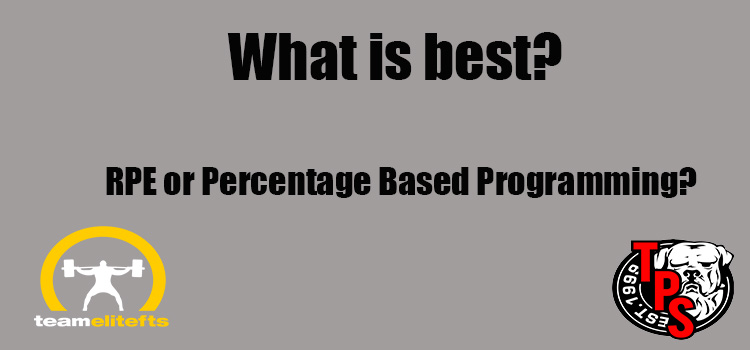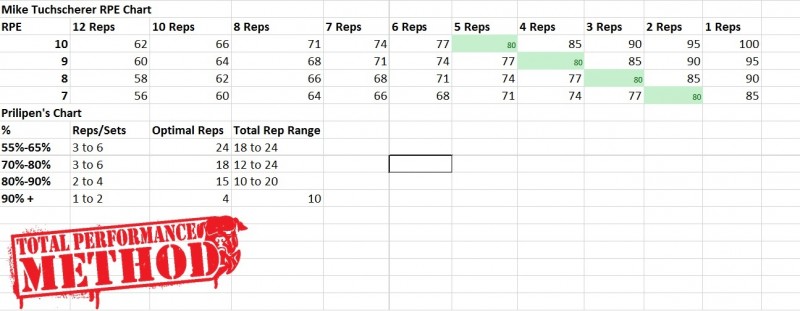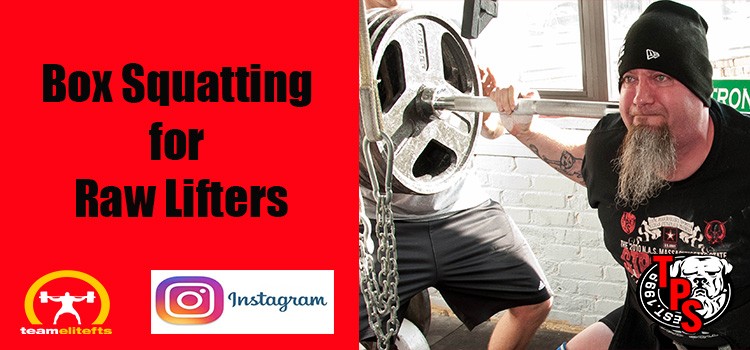
There are two very popular methods of programming now RPE and Percentage based.
They aren’t the only two, but they are the biggies.
Let’s look at both.
RPE
When using RPE based training, or Rate of Perceived Exertion, the user ranks the intensity of each set based on a scale.
The scale usually ranges from 6-10.
Coaches classify these numbers differently, but it usually looks like this:
-
RPE 10-no more reps could be performed
-
RPE 9: 1 more rep cold be performed
-
RPE 8: 2 more reps could be performed
-
RPE 7: 3 more reps could be performed
-
RPE 6: 4 more reps could be performed
-
Most do not go below 6 on the scale.
RPE is gauged based on how hard you thought the set was.
Let’s say you smashed a set of squats and did your programmed reps, and you are pretty sure you could have done 2 more.
That’s an 8.
Get it?
RPE based training is a very good tool to use in order to control intensity and keep the progress coming, but RPE does have drawbacks.
We all too frequently see people OVERSHOOT or UNDERSHOOT RPE.
Beginners tend to Undershoot, those with a little more experience (not enough to be good, but enough to get themselves in trouble. Sort of like me with a welder) tend to Overshoot.
What is Overshooting/Undershooting?
Overshooting RPE is when you have 5 sets of 5 at an RPE 7 on the Squat and you:
- Smash the first rep
- The second goes slow
- The third is a grinder
- The fourth your knees cave in and your head is pushed forward like a buzzard
- The fifth your spleen falls out
- And you say it was an RPE 7.
- This is an Overshooting of the RPE.
I see this all the time in my gym and on the Instagrams.
I feel like I am on a TV show and I am getting pranked with all of the Overshot RPE’s I see online.
It’s an epidemic.
A Pandemic even.
Undershooting is the opposite.
You do a set and record the RPE as much lower than it was because, most of the time, you just don’t understand how this works. Undershooting is usually reserved to beginners.
Their lack of experience causes this, it’s not their fault.
When RPE is done right, it is Auto-Regulatory because it doesn’t lock you into a number.
It locks you into a concept. The concept is to work at a specific level of intensity FOR THE DAY.
Of course your program should account for the day, week, months, etc. but you use the RPE for the day.
If everything feels like a feather, go heavier.
If everything feels like 5 tons, go lighter.
When done right it works really well. Too bad most don’t do it right.
Now the we have covered what RPE is in brief format, let’s look at Percentages.
It’s hard to argue with basing your training off a percentage of a 1 rep max.
Really.
It’s pretty good. It works. It’s proven.
When using percentages, it is a pretty simple concept to understand.
Your 1 rep max in the Squat is 500.
The program calls for 5 sets of 3 reps at 80%.
You use 400 pounds for your work sets.
Now the problem with percentage based training is that you need to run the numbers.
If you are having an off day to bad kid.
You gotta hit the numbers.
Same goes for days when you are on fire.
If the weight feels super light, you still need to stick by the numbers.
It is not Auto Regulatory and while this is not always bad, it can affect people poorly.
Mentally.
You know you are supposed to hit 400 for 5 triples and you are struggling with 365, that is going to leave a dent in your soul.
So, what is best?
RPE or Percentage Based Programming?
Well, neither.
I think they are both equally as good when implemented properly.
It depends a lot on the mind set and mentality of the lifter.
Some need hard numbers to wrap their head around a program.
Think engineers, accountants, etc. For these types of people RPE usually will not work well.
RPE is better for other types of people. They just come in and work as hard as the program calls for that day and don’t need a target to hit for the day.
Is there a better way?
Glad you asked, I think there is.
I use a hybrid of both in my programming for the TPS Method and the TPS Method for Powerlifting and we are getting better results with this than with any other style of programming that I‘ve done before.
I use it for all of my groups and online programming.
I also use it for some individual programming, but I make exceptions there.
How do we do it?
Well, it is pretty simple.
I’ve described it before in other articles, but I’ve been getting a lot of questions on it lately, so I figured I’d explain it again.
I use both, RPE and percentages.
A sample day would look like this:

Squat with Chains
5 sets 3 reps RPE 7/75%
You can see there are 15 total reps for work sets here and Prilipin’s chart states that 18 reps is optimal for the 70%-80% range of intensity with the total reps to be between 12-24 total.
We are in the sweet spot.
Our lifters will perform their first set at 75% and judge the RPE.
It should be a 7.
Our system allows the weight to moved up or down and we feel the RPE is more important than the percentage.
The percentage is a guideline. BUT-we don’t go up too much.
We use a standard deviation of 2 ½% -5% for increases.
If the RPE feels lower than the programmed number, we add 2 ½%.
If that is still light we go to 5% over.
We never go over a 5% increase because that can negatively affect the rest of the program, and the recovery.
If we increase by 5% and it is still too easy on the RPE, there are ways to make the RPE higher.
- You can move the weight FASTER.
- You can pause between reps a little longer.
- You can slow your eccentric.
- On deadlifts, the easiest way to increase RPE is to let go of that bar after it touches the floor each rep, stand up, reset and go again. This is much harder than touch and go reps. It really increases the RPE.
What if it is too high on the RPE and the weight feels waaaaaaay too heavy?
Easy, drop the weight.
Most of the time a 2 ½% decrease does it.
Sometimes a 5% decrease is what is needed.
When lowering weight, we allow a little more leeway than when increasing it.
Sometimes you are fried from the week of training, or the last session.
If a 5% decrease isn’t enough, you can go down up to 10%.
If 10% doesn’t do it, we sometimes suggest taking the rest of the session off as your recovery is not up to snuff and you need to live to fight another day.
This is a very rare occasion.
So, there it is.
Remember, this is my opinion, and my way of programming.
I am sharing it because we have had a ton of success with it in our fitness and powerlifting programs and I hope it will help you.
Did you miss my last Coaching Log?
Ask me a question-Be sure and Type to Murph in the header
Find me on Google-search for Total Performance Sports Malden, Mass. The Best Gym in Boston, Facebook too.
Oh, yeah, follow us on Instagram too. TPSMalden
SHARE THIS!
#bostonsstrongest
Vincere vel mori










